Discover the essential role of a window regulator in your vehicle’s functionality as we dive into its mechanics, purpose, and importance.
Windows are an essential part of any house, providing natural light and ventilation. But have you ever wondered how they function? How do they open and close smoothly without falling off their hinges? Well, the answer lies in a small but crucial component called the window regulator.
In this blog post, we’ll take a closer look at what a window regulator is, how it works, and why it’s essential for every homeowner to understand its importance. So let’s dive in!
Key takeaways:
- Windows function with a crucial component called a window regulator.
- Window regulators raise and lower the glass pane.
- Manual and electric window regulators are available.
- Mechanical/manual and electrical/window motor are common types.
- Signs of a failing window regulator include slow movement and unusual noises.
Definition of Window Regulator
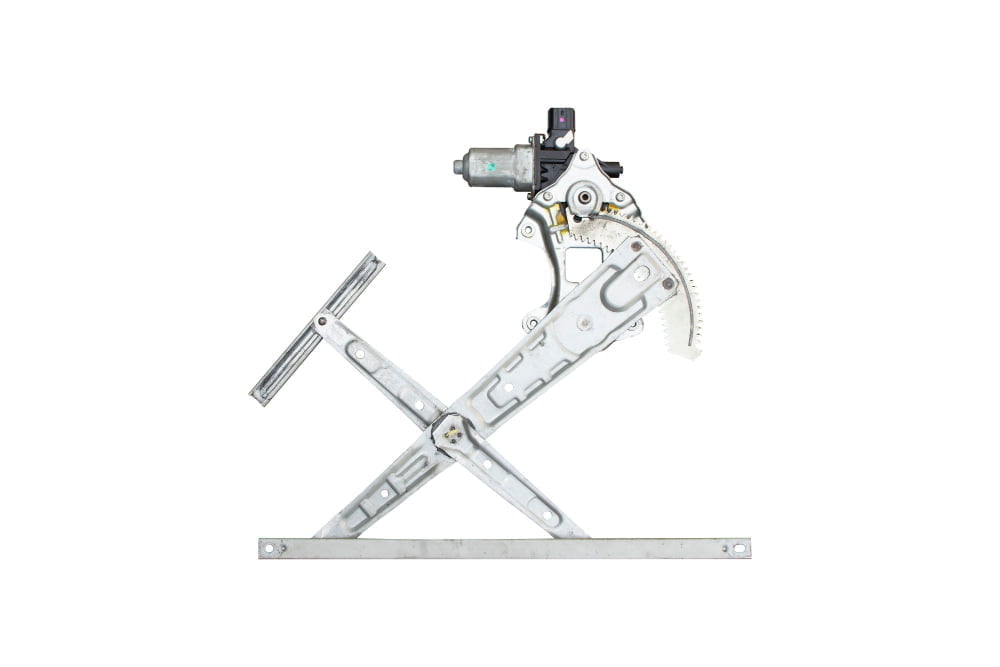
It’s responsible for raising and lowering the glass pane, allowing fresh air to enter and exit while keeping unwanted elements out. The regulator works by converting rotational motion into linear motion, which moves the window up or down along its track.
Window regulators come in different types depending on their mechanism of operation. Some are manual while others are electrically powered with switches located on door panels or center consoles.
Understanding what a window regulator is will help you identify any issues that may arise with your windows’ functionality and take appropriate action before it becomes too late.
The Function of a Window Regulator
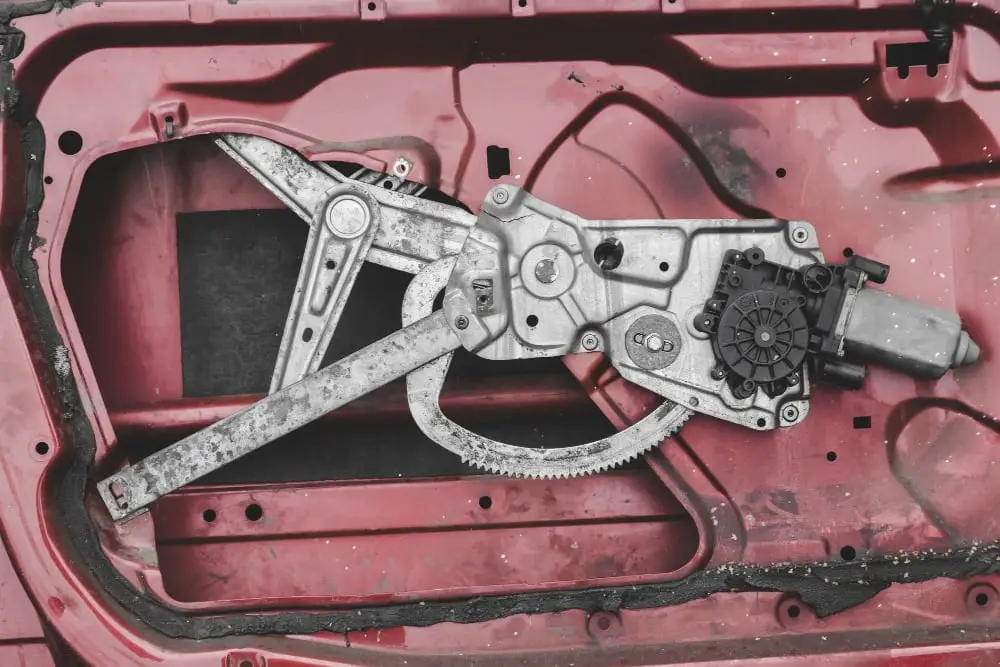
It acts as a mechanical device that converts rotational motion into linear motion, allowing you to open or close your vehicle’s windows with ease. The regulator works by using either an electric motor or manual crank handle, which moves the window glass along its track.
In addition to controlling the movement of your car’s windows, a window regulator also plays an essential role in ensuring their stability and safety. Without it, there would be nothing holding the glass in place when you roll down your car’s windows.
Window regulators come in different types depending on their mechanism – mechanical/manual and electrical/window motors (power). Mechanical regulators use hand cranks while electrical ones are powered by electric motors controlled through switches mounted on door panels.
Types of Window Regulators
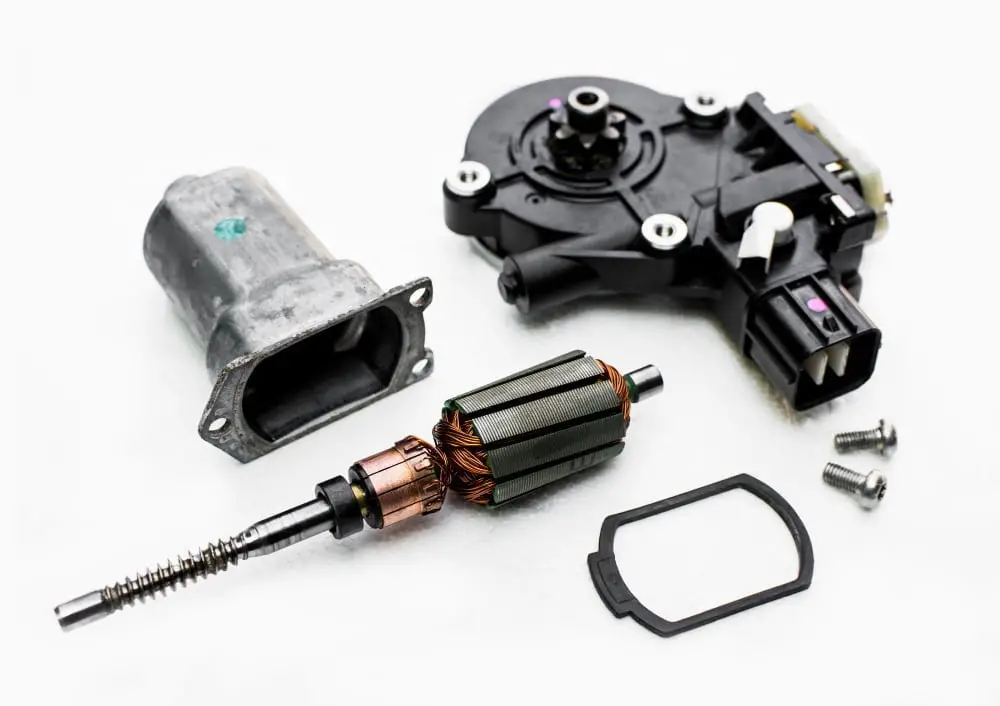
Mechanical or manual window regulators have been around for a long time, while electrical ones are more modern and commonly found in newer vehicles.
Mechanical/manual window regulators use a hand crank to move the glass up or down. They consist of several components such as gears, rollers, tracks, and arms that work together to raise or lower the glass smoothly.
On the other hand, electrically operated windows use an electric motor to power the regulator mechanism. The motor is connected to a switch on your door panel that allows you to control when your windows go up or down with just one touch of a button.
Both types come in different designs such as scissor-type and cable-type mechanisms which determine how they operate within their respective categories. Scissor-type mechanisms utilize metal bars arranged like scissors while cable-types rely on cables wound around drums attached at either end of each side’s track system.
Mechanical/Manual Window Regulators
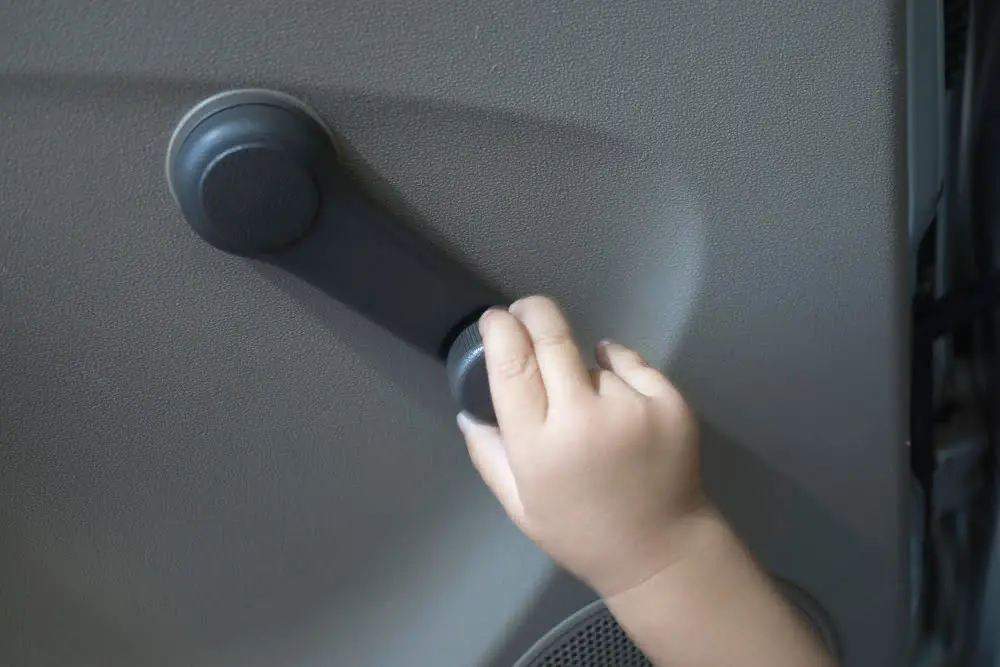
They use a hand crank to move the window up and down, which is connected to a gear mechanism that moves the glass along its track. These types of regulators are commonly found in older vehicles and some entry-level models.
One advantage of mechanical/manual window regulators is their simplicity, making them easy to repair if they fail. However, they can be challenging for some people with limited mobility or strength as it requires physical effort to operate them.
Another disadvantage is that these types of regulators do not offer any automatic features such as auto-up/down function or remote control operation like electrical ones do.
Electrical Window Regulators
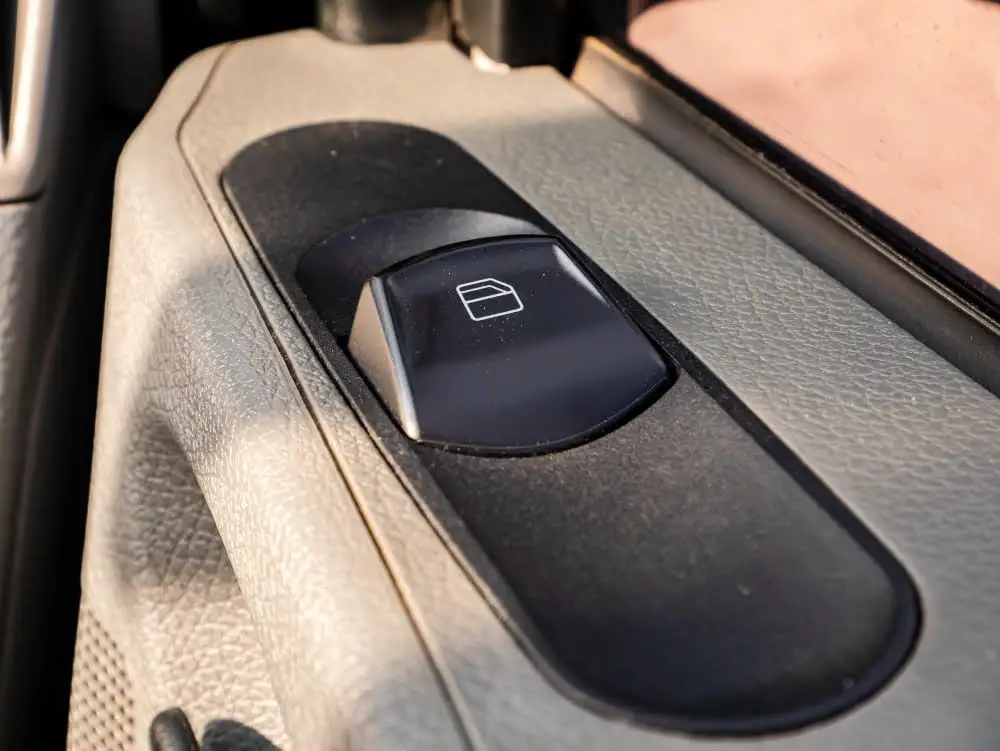
Unlike mechanical/manual regulators, electrical window regulators use an electric motor to move the glass up and down. This makes them much easier to operate as they require less physical effort from the driver or passenger.
The working mechanism of an electrical regulator is quite simple; when you press the button on your door panel, it sends a signal to the control module which then activates the electric motor. The motor turns a gear that moves along with cables attached to it, pulling or pushing on one side while releasing tension on another side depending upon whether you want your window up or down.
One advantage of electrical window regulators is their ability to provide precise control over how far open or closed your windows are. They also come equipped with safety features such as auto-reverse function which stops and reverses direction if something gets caught between the glass and frame while closing.
However, like any other component in your car’s power system, these types of regulators can fail due to wear and tear over time leading them not functioning correctly anymore.
Scissor-Type Window Regulators
They consist of two metal arms that move up and down, connected by a series of pivot points that resemble a scissor mechanism. When you turn the crank or press the button to raise or lower your car’s window, these arms extend and retract to move the glass accordingly.
One advantage of scissor-type regulators is their simplicity; they have fewer moving parts than other types, which makes them less prone to failure. However, they can still wear out over time due to regular use and exposure to weather elements.
Cable-Type Window Regulators
They work by using a cable to move the window up and down, which is attached to a motor or handle. The cable runs through a series of pulleys and guides, which help keep it in place as it moves.
One advantage of Cable-Type Window Regulators over other types is their simplicity. They have fewer moving parts than Scissor-Type regulators, making them less prone to failure due to wear and tear.
However, they can still experience problems such as frayed cables or broken pulleys if not properly maintained. It’s important for vehicle owners to regularly inspect their Cable-Type Window Regulators for signs of wear or damage and address any issues promptly before they become more serious.
If you’re experiencing issues with your car windows not rolling up or down smoothly, there’s a good chance that your Cable-Type Window Regulator may be the culprit. In this case, it’s best to consult with an experienced mechanic who can diagnose the problem accurately and recommend appropriate repairs or replacements if necessary.
Working Mechanism
It consists of a series of gears, cables, and pulleys that work together to move the window up or down. When you turn the crank handle or press the power button in your car’s door panel, it activates an electric motor that drives these components.
In manual regulators, turning the crank handle rotates a gear inside the regulator assembly. This gear meshes with another gear on top of a scissor-like arm attached to each side of your car’s window glass.
As you continue cranking, this scissor-arm moves up and down along two tracks mounted inside your door frame.
On electrical regulators found in modern cars today instead use an electric motor to drive these same components automatically when you press either switch located on either front doors’ armrests (or rear doors). The motor turns one end of cable spool while winding/unwinding wire rope around it which pulls/pushes sliding blocks connected with metal arms moving them back/forth along guide rails fixed within inner part(s) where windows are installed.
Components of a Regulator
It is responsible for controlling the up and down movement of your vehicle’s windows, allowing you to open and close them with ease. A typical window regulator consists of several components that work together to ensure smooth operation.
One such component is the gear set, which converts rotational motion into linear motion. The gear set comprises two gears – one attached to the motor shaft and another connected to a worm screw or rack-and-pinion mechanism.
Another critical part of a window regulator is its track assembly, which guides the glass as it moves up or down along its path. The track assembly can be made from plastic or metal depending on its application.
A scissor-type regulator has an armrest bracket at one end while cable-type regulators have cables instead of arms; these cables are guided by pulleys mounted inside door panels. There are also various clips and fasteners used in securing different parts together within this system.
Understanding these components will help you diagnose any issues with your car’s power windows quickly.
Common Problems and Symptoms of a Bad Window Regulator

One of the most common symptoms is when your window won’t roll up or down smoothly. You may hear strange noises like grinding or clicking sounds when trying to operate your windows.
Another sign that something is wrong with your regulator is if you notice that one side of the glass moves slower than the other side, which could indicate an issue with cable tension. If this happens, don’t try to force anything as this could lead to further damage.
If you’re experiencing any issues with your power windows not working correctly or making unusual noises while operating them, then there’s a good chance that something isn’t right with your window regulator.
Power Window Troubleshooting
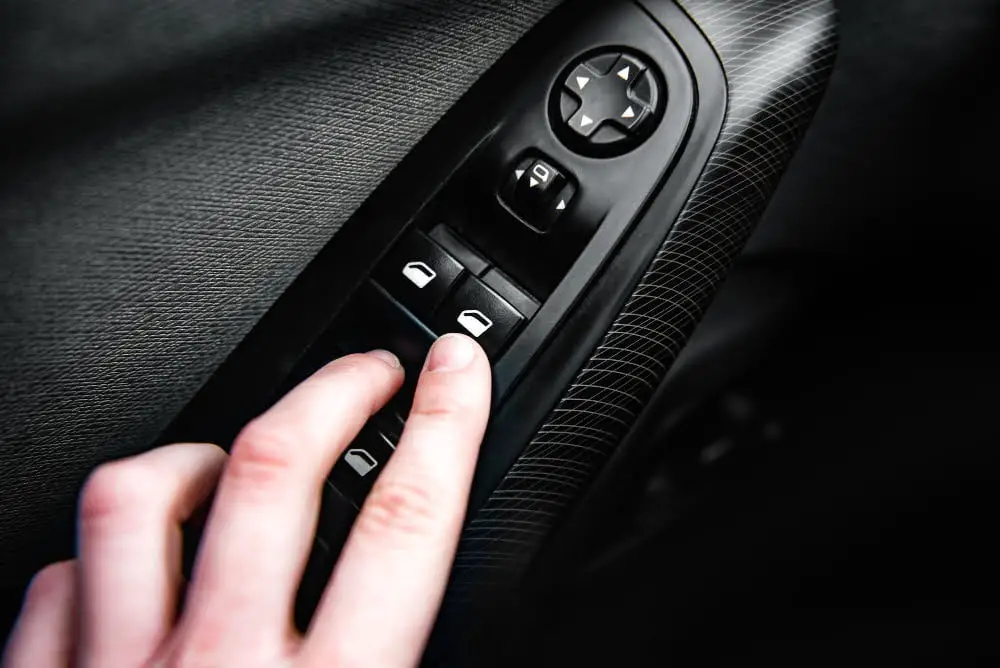
However, when they stop working correctly, it can be frustrating and even dangerous. Power window troubleshooting is essential to identify the problem and fix it before it becomes a more significant issue.
The first step in power window troubleshooting is to determine if the problem lies with the switch or motor. If none of your windows are working, then there may be an issue with the master switch on your driver’s side door panel.
On the other hand, if only one window isn’t functioning correctly while others work fine – this could indicate a faulty motor.
Another common cause of power window failure is a blown fuse or relay that controls all four windows’ operation simultaneously. In such cases replacing these components will solve most problems related to non-functioning electrically operated house windows.
In some instances where none of these solutions seem effective enough for fixing issues related to malfunctioning electrically powered home-windows; professional help from an expert technician might become necessary as electrical wiring faults could also lead up-to similar situations which require specialized knowledge for rectification purposes.
How to Test a Regulator and Window Motor

Testing a window regulator and motor can be done using a multimeter. A multimeter is an electronic device that measures voltage, current, and resistance in electrical circuits.
Firstly, remove the door panel of the affected window to access the wiring harness that connects to both the regulator and motor. Then disconnect it from both components.
Next step involves testing for continuity between each wire on your connector with a digital multimeter set at ohms (Ω). Check if there’s any reading on all wires when you operate your switch up or down position while holding one probe against ground (metal part of car) then touch another probe onto each wire individually until finding which one has no continuity – this will indicate where problem lies either with bad connection somewhere along line leading up into vehicle’s fuse box OR within actual component itself such as broken cable inside mechanism causing it not move properly anymore due wear & tear over time.
If there are no issues found during this initial test phase but still experiencing problems like slow movement or intermittent operation then further tests may be required including checking power supply voltage levels at various points throughout system using voltmeter tool instead measuring resistance values only as previously described above.
Signs of Regulator Failure
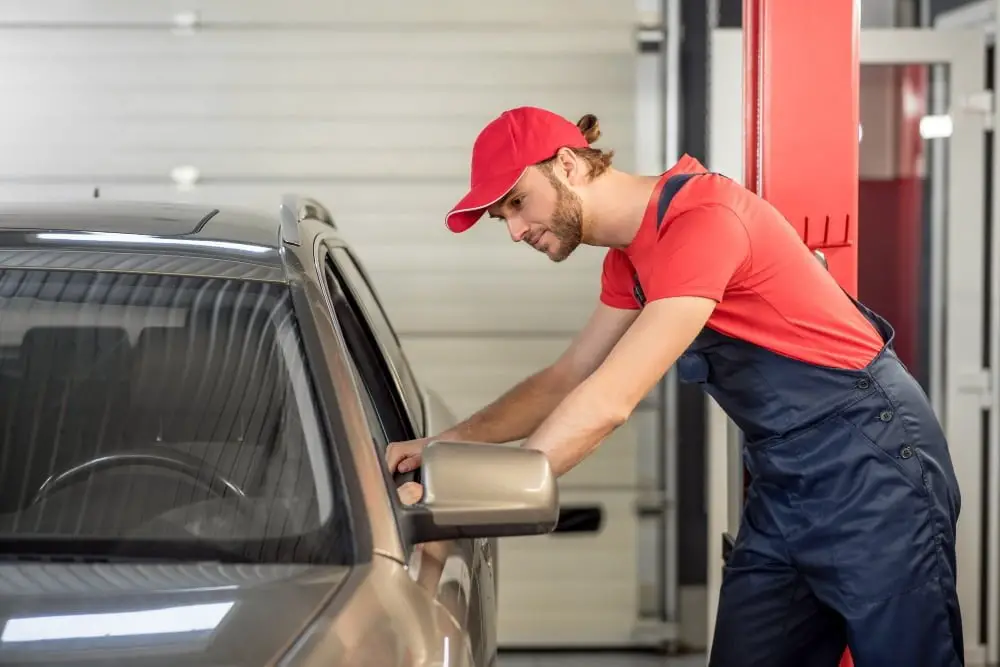
Here are some common signs to look out for:.
1. Slow or Stuck Windows: If your windows take longer than usual to open or close, it’s likely that the regulator is failing.
2. Window Falls Down: A faulty window regulator can cause the window to fall down suddenly while driving.
3. Unusual Noises: Grinding or clicking sounds when operating the power windows may indicate a problem with the window regulators.
4. Window Won’t Stay Up/Down: If you notice that your car’s power windows won’t stay up/down after being closed/opened, this could be due to a malfunctioning regulator.
It’s important not to ignore these warning signs as they can lead to more significant problems and even safety hazards on the road if left unaddressed.
Replacing a Window Regulator
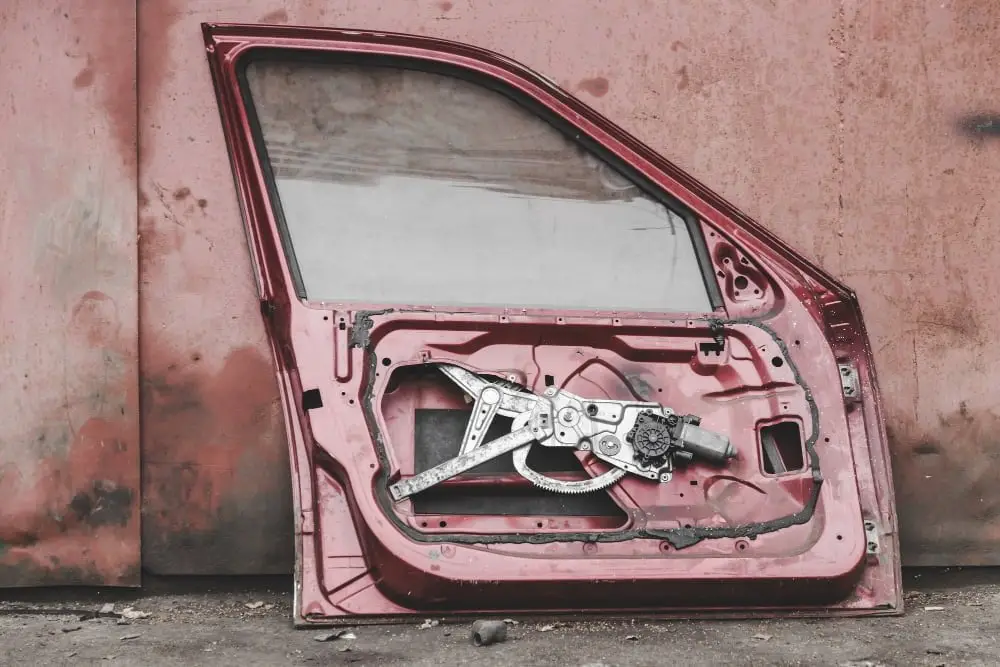
Replacing a window regulator can seem like a daunting task, but with the right tools and some basic knowledge of car mechanics, you can do it yourself.
Firstly, remove the door panel by unscrewing any screws and gently prying off any clips holding it in place. Once removed, locate the old regulator and disconnect all electrical connections before removing bolts that hold them in place.
Next step is to install your new replacement part by following these steps:.
- Install new bolts into holes on both sides of mounting bracket.
- Slide new regulator into position.
- Tighten nuts onto studs until snug (do not over-tighten).
- Connect wiring harnesses back together
- Reattach door panel
Once everything is reassembled correctly test out your newly installed part by rolling up/down windows several times to ensure proper function.
DIY Repair Tips and Replace a Window Regulator Yourself
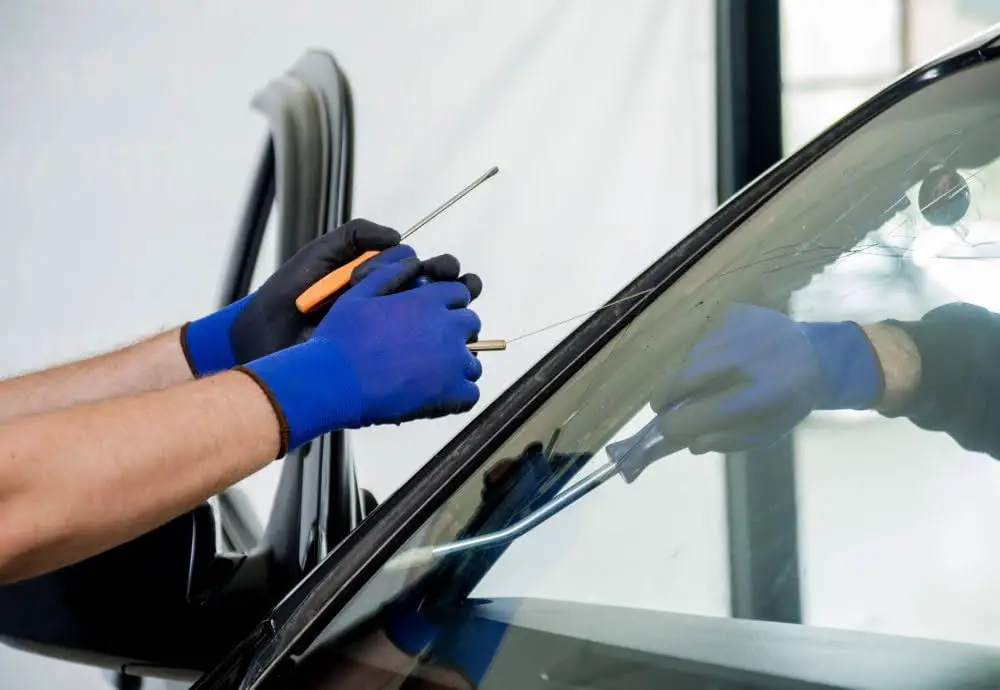
However, it’s essential to note that this task requires some mechanical knowledge and experience with tools. Before starting the repair process, ensure that you have all the necessary tools such as screwdrivers, pliers or wrenches.
The first step is to remove any screws or bolts holding the door panel in place carefully. Once removed, gently pry off any clips securing it before lifting it away from the door frame.
Next up is removing any remaining pieces of glass from inside your vehicle by using gloves for safety reasons since broken glass can be sharp and dangerous if not handled correctly.
Afterward comes disconnecting electrical connections between power windows switches (if applicable) before unscrewing mounting bolts on both sides of old regulators while taking care not to damage them during removal due to their fragility when worn out over time.
Finally installing new regulators involves reversing these steps but ensuring everything fits snugly into place without leaving gaps where water could seep through causing further damage down-the-line.
Cost of Replacement
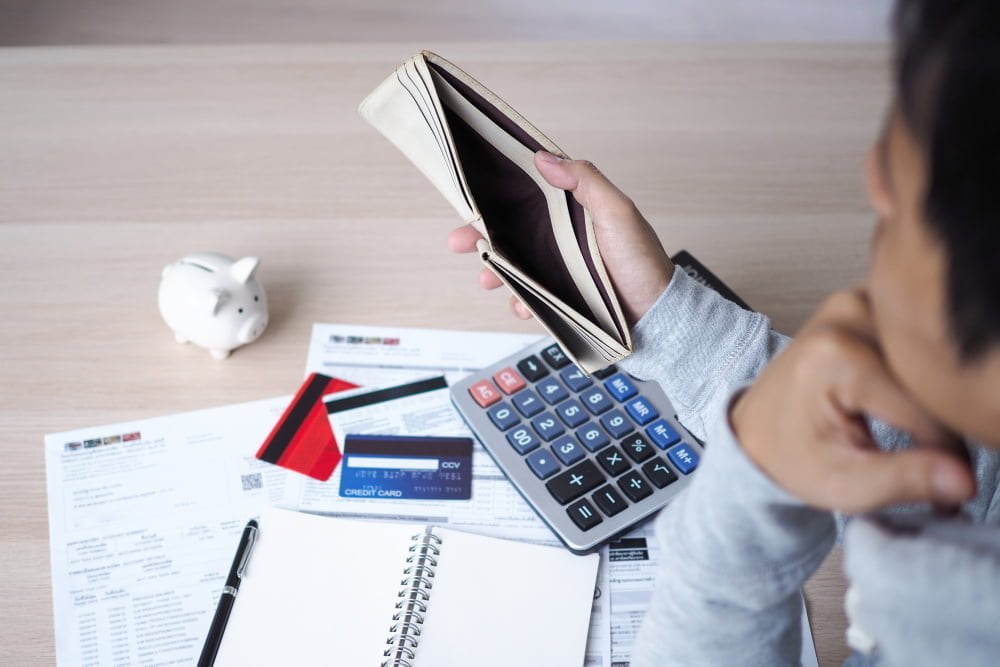
On average, you can expect to pay between $200 and $450 for parts and labor. However, luxury vehicles or those with more advanced electrical systems may require more expensive replacement parts, which could increase the overall cost.
While it may be tempting to try to save money by purchasing a cheaper aftermarket part or attempting a DIY repair, it’s important to consider safety first. A faulty window regulator not only affects your ability to roll down your windows but also compromises your car’s security system.
It is always recommended that you seek professional help when dealing with any issues related to power windows in order not only ensure proper installation but also avoid further damage that could lead up costing even more in repairs later on.
Choosing the Right Regulator

First and foremost, you need to know the make and model of your vehicle or type of window in your house. This is important because different types of windows require different regulators.
Next, you should consider whether you want a manual or electric regulator. Manual regulators are cheaper but require more effort to operate while electric ones offer convenience at an extra cost.
Another factor that affects your choice is durability; some brands may be more durable than others depending on their quality standards and materials used in manufacturing them.
Lastly, ensure that the replacement part matches with other components such as motors if they exist for power windows since compatibility issues can arise when parts don’t match up correctly leading to malfunctioning systems.
Maintenance Tips and How to Extend the Life of a Window Regulator
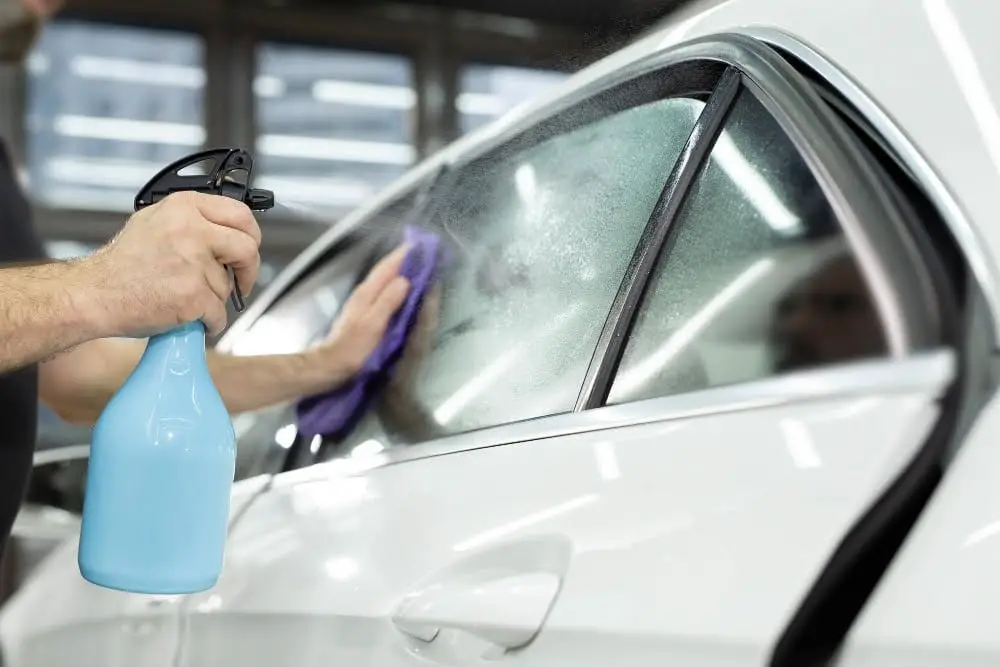
Regular maintenance can help prevent costly repairs or replacements down the line. Here are some simple steps you can take:
1. Keep your windows clean: Dirt and debris on the glass or in the tracks of your windows can cause unnecessary strain on your window regulator.
2. Lubricate moving parts: Use silicone spray lubricant to keep all moving parts of the regulator well-lubricated.
3. Check for loose connections: Loose electrical connections may cause power-window problems, so check them regularly.
4. Avoid slamming doors: Slamming car doors puts stress on both mechanical and electric regulators, leading to premature failure over time.
5. Don’t overload windows with heavy objects like luggage or sports equipment as this could damage their mechanisms.
Safety Considerations and Window Regulator AUTO-UP Function Reset
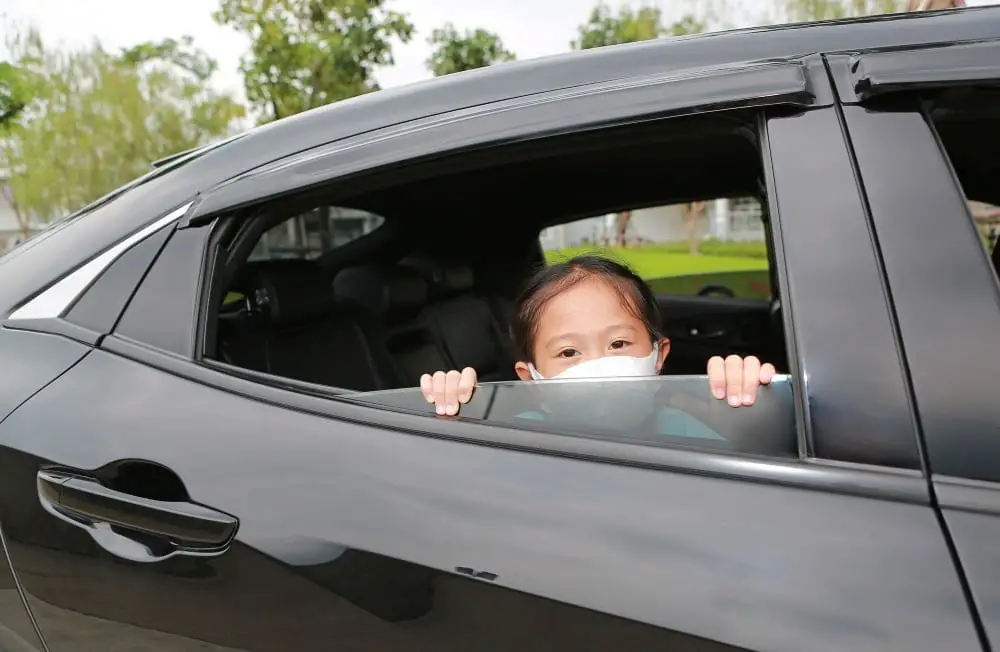
The AUTO-UP function of the regulator ensures that the window automatically stops when it encounters an obstruction while closing. This feature prevents accidents and injuries caused by windows closing on fingers or other objects.
However, if you ever need to replace your car battery or disconnect it for any reason, you may need to reset the AUTO-UP function of your window regulator. Failure to do so can result in malfunctioning windows that could pose a safety risk.
To reset this feature after replacing or disconnecting your car battery, follow these simple steps:.
- Turn on the ignition without starting the engine.
- Roll down both front windows completely.
- Hold down each front window switch until each respective window reaches its fully closed position and continue holding for two seconds.
- Release both switches at once.
- Test all auto-up functions by rolling up each front power-window one-touch (AUTO UP) operation several times.
By following these steps carefully, you can ensure that your vehicle’s power-windows are functioning correctly and safely after any necessary maintenance work has been done on them!.
FAQ
What happens when your window regulator goes out?
When your window regulator goes out, you may experience multiple presses for window movement, altered window speed, and clicking sounds from the door.
How much does it cost to replace a window regulator?
The cost to replace a window regulator typically ranges between $300 and $450, depending on the make and model of the car.
Is a power window motor and regulator the same thing?
No, a power window motor and regulator are not the same thing; they are two different parts with distinct functions.
What are the common signs of a failing window regulator?
Common signs of a failing window regulator include slow or uneven movement, a tilting window, clicking noises, and the window not staying in place.
Can you manually raise a window with a broken regulator?
Yes, you can manually raise a window with a broken regulator by supporting the glass and lifting it carefully while securing it in place using a prop, such as a wooden or plastic wedge.
How long does it typically take to replace a window regulator?
It typically takes about 1 to 2 hours to replace a window regulator.
Related Stories
- How to Clean a Window Fan: Easy Steps for Sparkling Results
- Aluminum Slider Window Parts: Essential Buying Guide for Replacement & Repair
- Parts of a Window: Comprehensive Guide to Window Components & Terminology
- Aluminum Awning Window Parts for Easy Repairs and Upgrades
- How to Remove Window Sash from Frame Effortlessly
Recap
